Your baby is growing fast and is moving on to the toddler stage.... And a world of food awaits them!
Do you know how to feed your toddler and which foods to avoid? What happens if your toddler just refuses to eat? Why is correct toddler feeding important? What can you feed your toddler when you're on holiday?
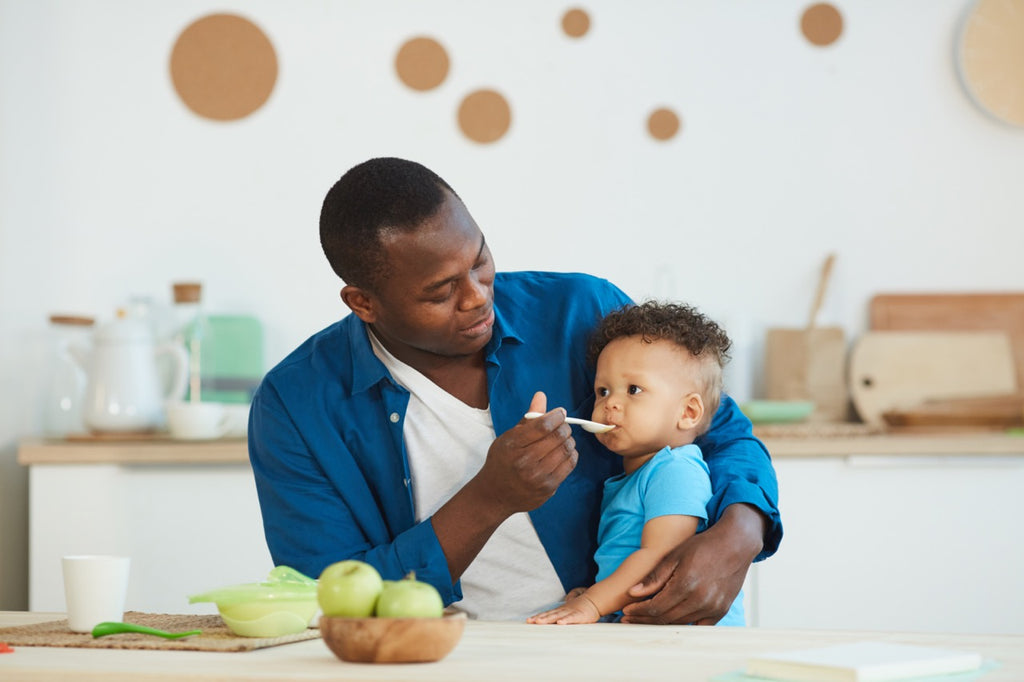
We'll answer these questions and more in our comprehensive guide to toddler feeding! Whether you're an experienced mum or a newbie were sure that you'll find lots of interesting information in our toddler feeding guide.
Blog Summary
- The Basics - A healthy, well balanced diet
- Foods containing fat, salt and sugar
- How much food does a toddler need?
- Toddler feeding schedule
- When should toddlers be feeding themselves?
- How do you stop bottle feeding a toddler?
- How do I feed a fussy eater and what to do if your toddler is a picky eater?
- What to feed a toddler who won’t eat
- What to feed a toddler with diarrhoea
- How to feed a toddler with a fever
- When to stop feeding a toddler at night
- Which foods should you avoid when feeding a toddler?
- Feeding a toddler on holiday
- Feeding a toddler on the go
- Toddler feeding therapy
- Toddler feeding utensils
- Other commonly asked toddler feeding questions
Let's start with the basics!
Actually the principles of a healthy diet are similar for adults and toddlers alike! Obviously portion size and frequency of feeding are very different and nutrient requirements change at different ages, but the foundations of a healthy diet are laid with toddlers and are built on throughout life!
It's really important to feed your toddler correctly because in doing this you'll be paving the way for a lifetime of healthy eating! You'll also be giving them all the nutrients and energy they need in order to grow and develop into little people! Introduce your toddler to new foods now and they'll develop experience of different tastes and flavours which will hopefully mean they'll be happy to experiment with a wide range of foods as they grow!
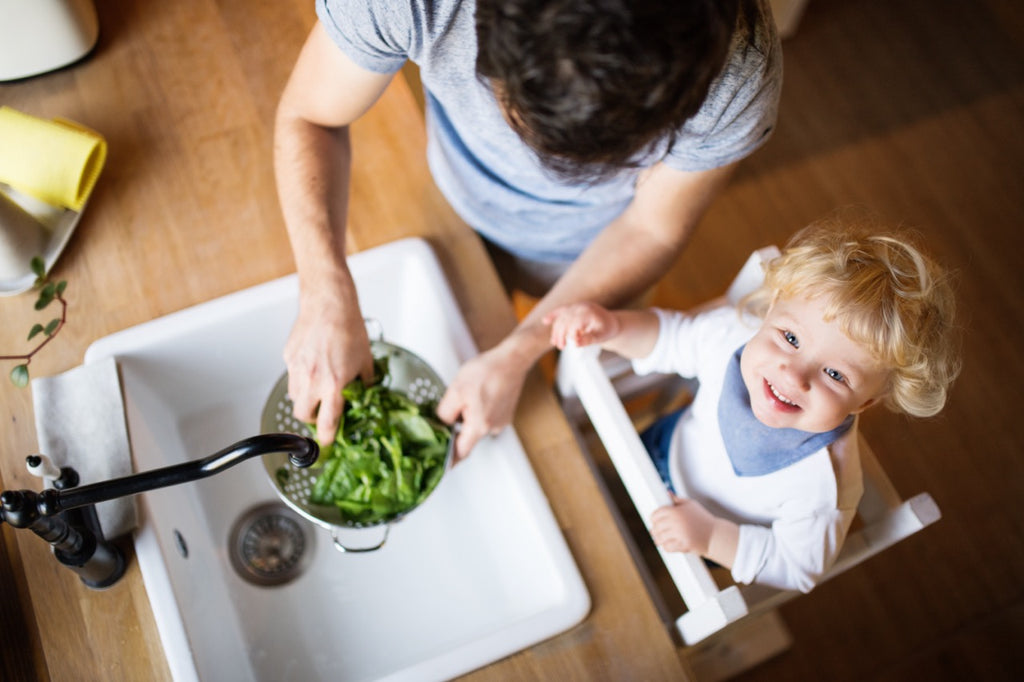
Before we start it’s important to say that whenever you’re concerned about your toddler’s eating you should always ask a doctor or paediatric health professional. Nothing can take the place of professional advice that’s tailored to your toddler. Our guide is intended to provide a general overview of toddler feeding and to give you some useful resources you can check out for more information!
A healthy, well balanced diet consists of:
Fruit and vegetables
It’s really good to introduce your toddler to as many different fruits and vegetables as possible! If they try lots of different flavours then they are far more likely to be getting a varied selection of nutrients and they’re going to be getting used to a whole range of textures and tastes! This is a great preparation for a lifetime of healthy eating!
If your toddler will only eat one or two vegetables and fruits to begin with, don’t worry. Start small and let them enjoy what they like! They will probably branch out later…don’t get stressed over things if they won’t try a large variety - they’ll feel the pressure and will associate eating with tension! They’re really just experimenting at this stage so be cool and let them play with the fruit and vegetables!
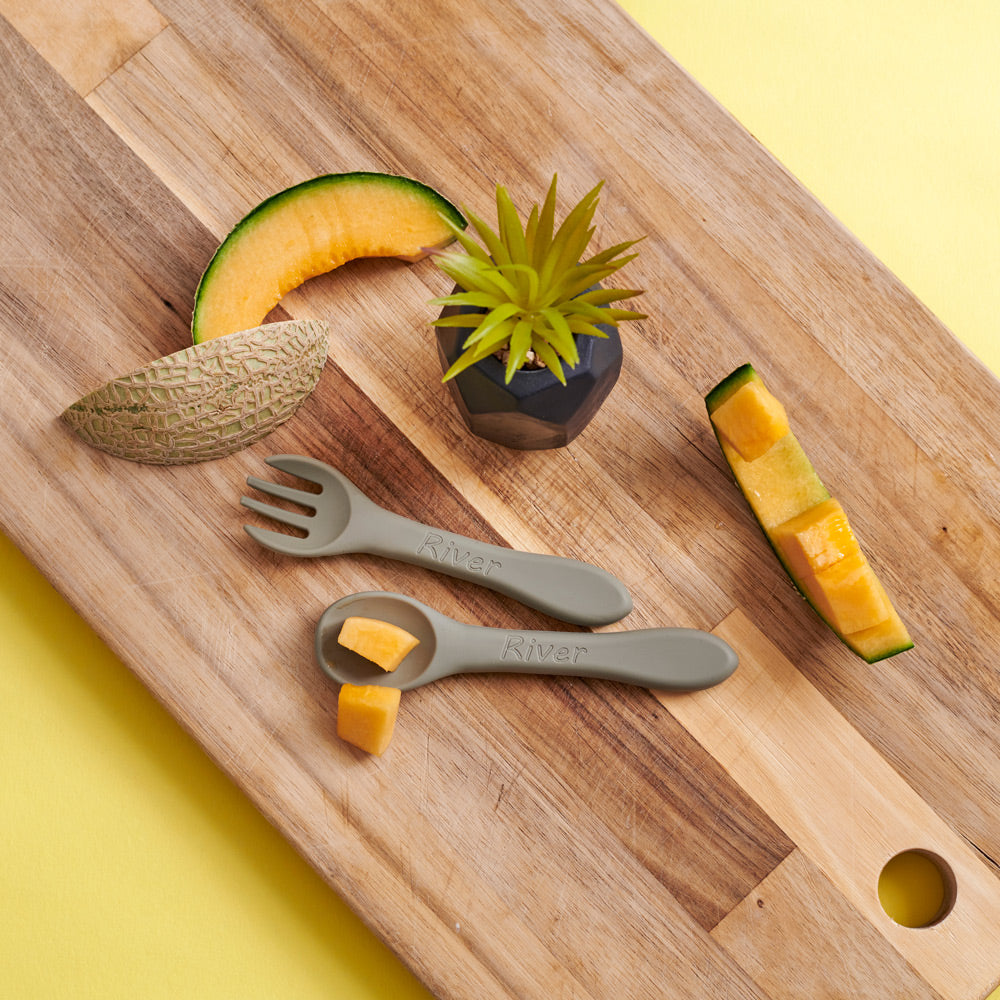
It’s really great if you have the room to grow some vegetables or fruits too! Get the kids involved in planting and watering and they’ll be fascinated by the fruit of their labour! It might even encourage them to try what they’ve grown!
You can also ‘hide’ vegetables in pasta dishes and on mini pizza, or in soups and sauces if your kids will eat those.
Bread, rice, pasta, potatoes and other starches
This group includes things like chapatis, pitta bread, yams, couscous, pasta, potatoes, rice and breakfast cereals.
Little ones can eat wholegrain varieties but too many wholegrain things fill up little tummies really quickly so it’s best to mix it up. You don’t want them to be too full to get all the nutrients they need so don’t overload them with fibre!
Milk and dairy foods
Babies exclusively drink breast milk or formula for the first 6 months, before weaning begins. After the first year cow’s milk can be introduced.
Whole milk and dairy products are rich in calcium which helps kids develop strong teeth and bones, and vitamin A which helps protect against infection.
Toddlers should have around 350ml of milk or 2-3 servings of milk products daily. This can include cheeses and yogurt. Full fat milk is recommended until the age of 2, then you can start introducing semi skimmed milk as long as your child eats well. Skimmed milk doesn’t contain enough fat for the under 5s, but of course can be used in cooking if desired.

If you prefer a plant based milk, you can give unsweetened oat, almond or soya milk from the age of 1 as part of a balanced diet. The exception is rice milk which contains too much arsenic for the under 5s.
Be aware that toddlers will need to drink more of plant based milks to get the same amount of energy. As a guide here are some equivalents:
50ml cow’s milk is equivalent in calorie terms to:
- 75ml oat milk
- 100ml soya or pea milk
- 250ml coconut milk
- 250ml almond milk
Bearing in mind that a guide amount for toddlers is 350ml cow’s milk a day, you can see how much almond milk they would have to consume to get the same amount of energy!
Cheese
Cheese is great for little ones as part of a balanced diet!
Hard cheese and cottage cheese plus other soft cheeses can be given to toddlers from the age of 6 months when weaning begins and little tummies can tolerate foods other than their milk or formula.
Children age 2 and under should stick to full fat cheeses because they need the energy to grow and they are easily filled up, so foods dense in nutrients are the key!
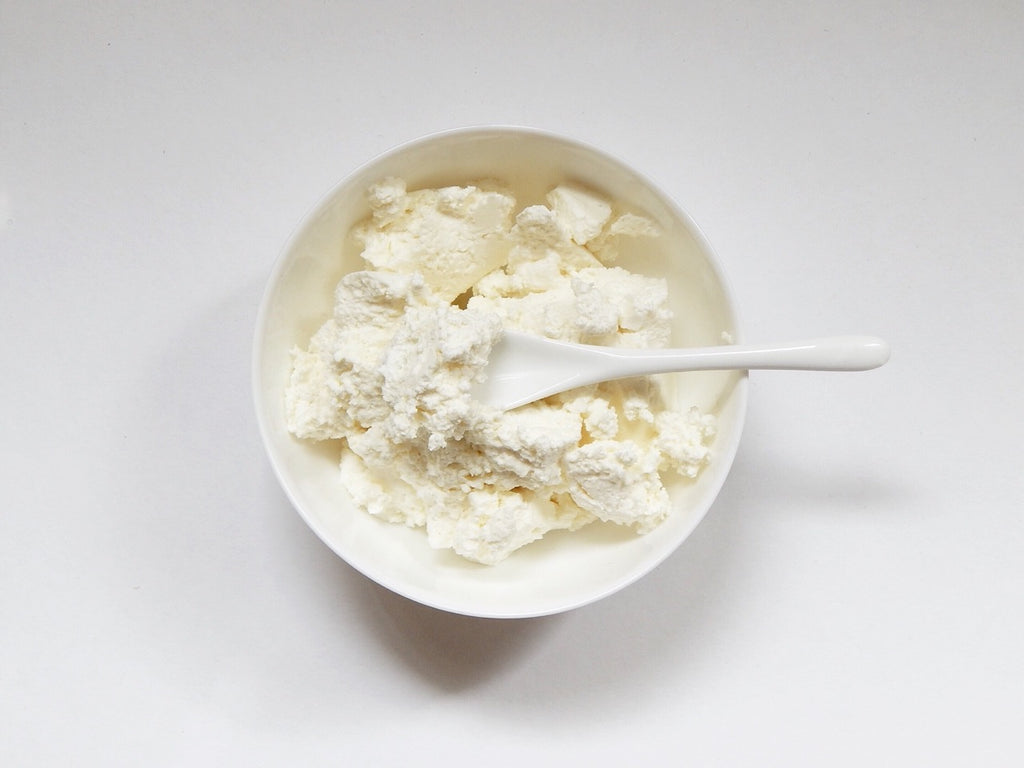
Cheeses with mould in them such as Danish Blue or Roquefort, and also unpasteurised cheeses with soft rind such as brie, Camembert and goat’s cheese shouldn’t be given in their raw form to young children, but they can be given when cooked into a recipe because cooking at a high temperature kills any listeria that could be found in these cheeses.
Protein
Your toddler should eat 1 - 2 portions of protein a day. Please see our guide below for portion sizes under ‘How much food does a toddler need?’
Foods which contain protein include meat, fish, eggs, pulses, nuts, tofu and soya products.
Protein is essential for growth and to feed muscles! Many sources of protein also contain iron, another essential nutrient.
Nuts are also a good source of protein but these shouldn’t be given in their whole form to kids under 5 because they can cause choking. Ground nuts are fine!
Oily fish is brilliant for nutrients but it must be limited because it can contain mercury. Limit salmon, fresh tuna, sardines, mackerel and other oily fish to 4 portions a week for boys and 2 portions a week for girls.

Iron
Your children need iron!
Iron comes in two forms:
Haem iron which is easily accessible for the body and is found in meat, fish and eggs.
Non Haem iron which is less easy for the body to absorb and is found in plants. If you include foods rich in vitamin C in meals containing non harm iron it becomes easier for the body to absorb. For example a bean casserole containing red, yellow and green peppers - they actually contain more vitamin C than oranges!
Non meat sources of iron include fortified breakfast cereals, legumes, pulses, dark green leafy vegetables and broad beans.
Lack of iron can cause iron deficient anaemia which can affect a child’s growth and development. So you need to try and include lots of iron rich foods in your toddler’s diet and not let them fill up on milk at the expense of other foods!
Foods containing fat, salt and sugar
Children under 2 need to eat foods rich in fat as part of their balanced diet. This is because fats contain important energy and also essential vitamins - and as it can often be difficult to get little ones to eat a lot, you need to include fats to make sure they get enough energy.
Fat
Examples of foods containing fats are whole milk, whole milk yogurt, full fat cheese and oily fish.
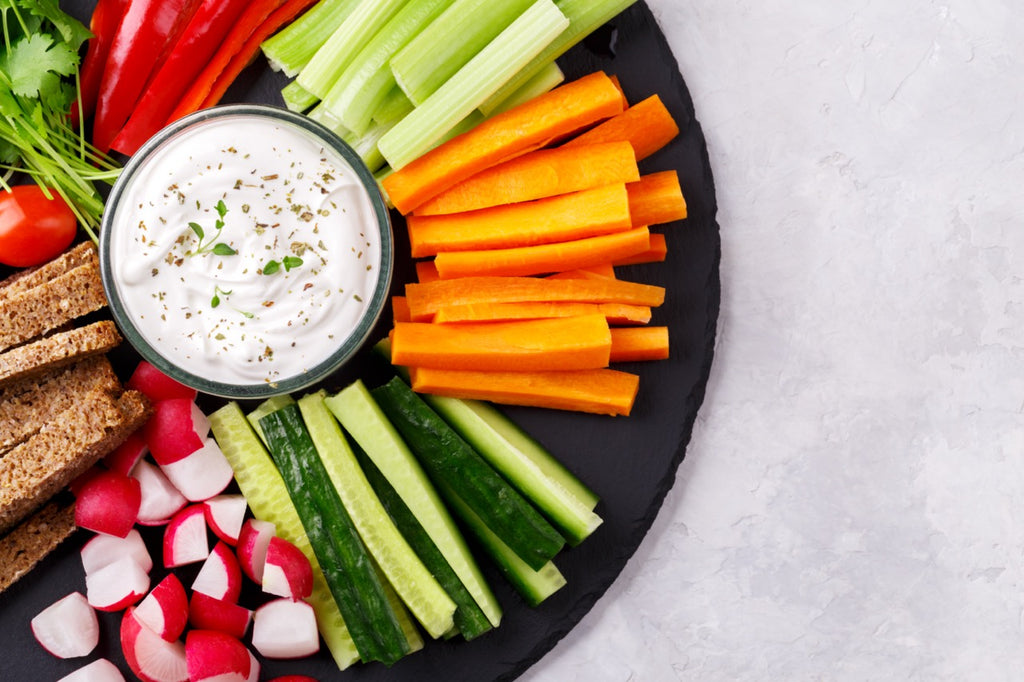
Children age 2 can take fat reduced versions of these foods, such as semi skimmed milk if they are growing well, and from 5 upwards kids can take similar fat reduced foods to adults.
For children over 5 it’s important to watch the amount of fat in meals and snacks, especially saturated fat which can be harmful over a long term.
Sugar
We all know that sugar can cause tooth decay and it can also add empty calories to the diet.
Children under 2 should drink whole milk or water.
Fruit juice is high in sugar but it can be diluted 1:10 with water and served with a meal if desired. Having sugary foods at a mealtime reduces their impact on the teeth - so if your little ones are going to have foods with sugar in then keep them to mealtimes!
Remember that dried fruits such as raisins also contain concentrated sugar.
Toddlers over the age of 1 can eat honey, under that age it shouldn’t be given as very occasionally it can contain traces of harmful bacteria.
Salt
Don’t add salt to your toddler’s food and watch the salt content in any foods that you give them. This helps to avoid your toddler getting a taste for salty foods - eating a lot of salty food can create problems with high blood pressure in adulthood. So best to keep salt to a minimum and don’t ever add it or have a salt cellar on the table!

So these are the basics of a toddler’s diet! Now let’s have a look at some of the more common questions parents ask about toddler feeding…..
How much food does a toddler need?
Well, obviously some toddlers will eat more than others, but as a general guide we’ve put together some toddler menus which show the portion sizes you should aim for as well as the combinations of protein, carbohydrates, vegetables, dairy and fruit.
BREAKFAST |
|
|
|
|
|
|
|
SNACKS |
||
|
|
|
|
|
|
|
LUNCH |
||
|
|
|
|
|
|
|
SNACKS - as above
DINNER |
||
|
|
|
|
|
|
DESSERT |
||
|
|
|
|
|
Remember that, unlike adults, it’s important for your toddler to have snacks as they can’t eat much at a time and many toddlers are not good eaters! Nutritious snacks help your toddler get the right amount of energy and nutrients which they might not get from meals alone. Toddlers need to eat frequently so snacks can help keep the energy levels consistent and might help your toddler avoid hunger meltdowns - which will also certainly help you!
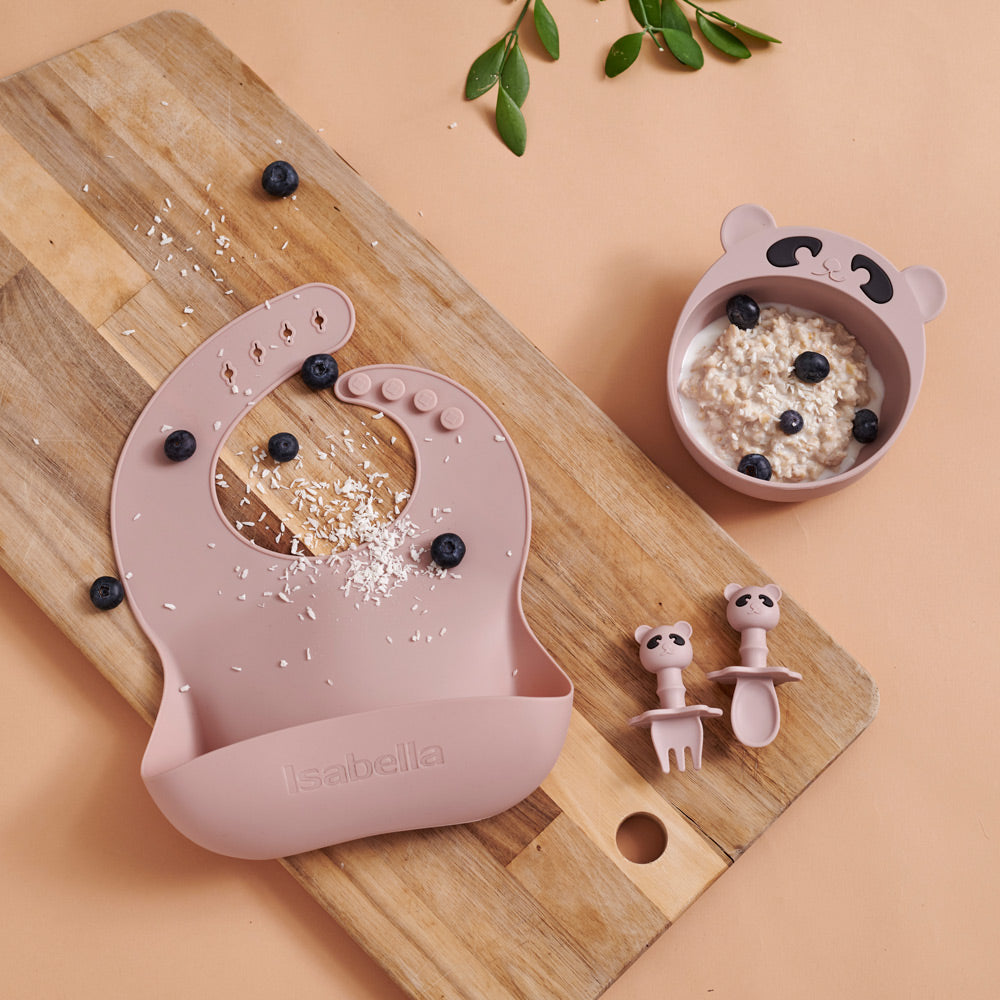
As a guide to help you get food quantities right, the following may be useful. The quantities are equivalent to 1 portion size*:
- 1 slice bread or toast
- 3/4 muffin or bagel
- 1/2 pitta bread, white or wholemeal
- 15g breadsticks
- 1/2 tortilla
- 2 oatcakes
- Rice/couscous/barley/polenta 80g
- Baked potato/mashed potato/chips/boiled potatoes 80g
- Sweet potato/yam 80g
- Spaghetti/pasta/noodles 80g
- Porridge 15g oats plus 100ml milk
- Weetabix/shredded wheat 1 bisk
- Cooked or raw vegetables 40g
- Fruits 40g
- Cheddar cheese 15g
- Cottage cheese 30g
- Mozzarella 1/4 ball
- Soft cheese 20g
- Plain full fat yogurt 60g
- Meat and fish 40g
- Pulses and beans 40g
- Tofu 50g
- Quorn 50g
- Soya mince 50g
Remember though that these quantities are just a guide. Your toddler may eat more or less and their appetite may vary when they’re growing fast or when they’ve been very active. Never try to force your toddler to eat a certain amount! If they don’t eat much at one meal, they’ll be hungry for a snack a few hours later, and probably for the next meal.
If you’re worried about how much to feed your toddler, have a look at some of our resources and always ask a health professional if you’re anxious about it.
Toddler feeding schedule
Toddlers need to eat frequently so the feeding schedule needs to consist of 3 meals and 2-3 snacks a day.
Depending on how early your toddler wakes up they may need a snack on waking, before breakfast, or if they tend to be up long after dinner they may need a bedtime snack. So the schedule can be flexible but it’s basically meal, snack, meal, snack, meal (possibly a snack before bed).
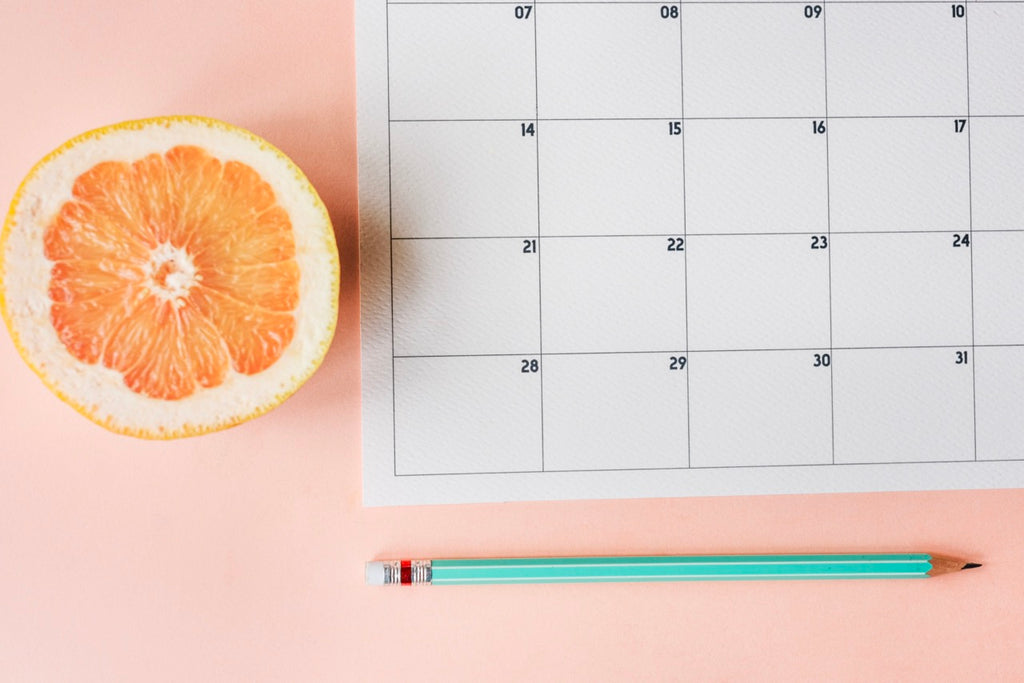
So the day should start with breakfast, then a mid morning snack, then lunch, then a mid afternoon snack, then dinner then possibly a night time snack.
Make sure meals and snacks have suitable time intervals between them so there are definite breaks from eating. You don’t want your toddler to be grazing all day or feeling hungry for long periods.
When should toddlers be feeding themselves?
Babies who do baby led weaning are starting to feed themselves at age 6-9 months. By letting them try things for themselves you certainly have a lot of mess to cope with but it’s important because they learn to control how much food should go into their mouths and to have a sense of control over what and how much they eat!
At age 12 - 15 months, toddlers are able to put a spoon into their mouths. Once they’ve mastered a spoon, they can move on to a toddler fork at around the same age.
From around 2 years old toddlers will be able to fully feed themselves and eat independently. This is also the age that they can develop the skill to use a knife properly.
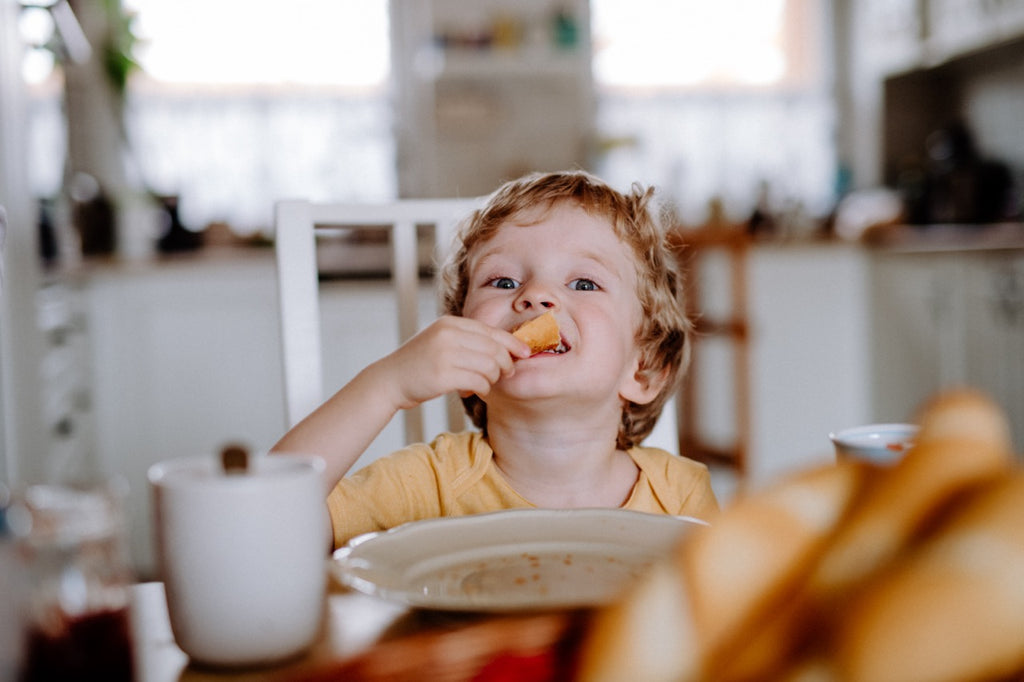
These are just approximate guides - don’t stress if your toddler is a bit slower to pick up these skills. It’s a matter of developing dexterity and coordination - and this develops at different rates.
You can always call on your health visitor or a child development professional if you’re worried that your toddler isn’t meeting your expectations when it comes to self feeding. They’ll be able to reassure you or to suggest ways of helping your child to learn independent eating.
You can help your child learn to self feed too! Here are a few tips:
- Make sure you have a schedule for feeding that leaves no longer than 2.5-3 hours between meals or snacks.
- Be a role model for your toddler - let them copy the way you eat!
- Get the proper kit - high chair, bibs, chunky cutlery, attractive plates and cups
- Eat as a family - makes it much more fun for your toddler! It also gives them the opportunity to copy adults and older siblings.
- Don’t stress over the mess! Experimentation results in mess and you have to try and let this happen! Things will only get better from here!
- Be very patient - meals make take longer than you want and it might just be a little frustrating! Keep going though and it can only get better!
- You can use your hands as a guide to help your little one - place a hand on their hand and guide them to get the food to their mouth. It really can work!
How do you stop bottle feeding a toddler?
Once your child is a year old they are ready for a change to cow’s milk - and away from bottles! If you’ve breast fed your baby then you might be able to avoid bottles altogether, if they have been formula fed then it might be time to switch to a cup.
Why do you need to stop bottles?
Bottles accelerate tooth decay when used for longer than necessary - they’re necessary for bottle fed babies in their first year but the bottle lets the lactose from milk stay on the teeth longer. This really isn’t good for little teeth!

Studies show that babies who continue with bottles at age 2 are more likely to be obese as 6 year olds. They get far too used to sucking on a bottle constantly and this can become a habit that’s hard to shake! They also are probably ingesting more calories than are needed because by the age of 2 they should be getting the majority of their calories from solid food and shouldn’t need to have extra milk feeds.
If you let toddlers have a bottle while lying down it can increase the likelihood of ear infections. This is because the milk can sit in the throat and drip down the ear canal and bacteria can grow on it!
Many paediatricians recommend introducing a sip cup from the age of 6 - 9 months. This makes it much easier to switch from bottles.
So how do you stop the bottles?
There are two ways to go about this!
You can go cold turkey and just take all the bottles away. This is clear cut but might be quite stressful for you and your toddler!
Or - you can gradually reduce the number of times a day you give your baby a bottle. The night time bottle will probably be the most difficult to kick because it can be a source of comfort for your baby and a way to settle them down for the night.

It’s best to start by taking away mid morning bottles, then the early morning one, then lastly the night time bottle. Stick to your usual night time routines in other ways - a bath, a story, a nice cuddle. This will help keep your baby feeling safe and secure and hopefully help them to fall asleep.
If your baby is really unwilling to give up bottles, you can try putting milk into a cup and water in a bottle and see which they will take! This might force your baby to make a choice!
How do I feed a fussy eater and what to do if your toddler is a picky eater?
Some toddlers have a very limited range of foods that they will eat and it can be frustrating trying to get them to try others!
Here are a few tips to help you with fussy eaters:
- Make sure you aren’t making mealtimes stressful by worrying about what your toddler is eating. Try to stay relaxed, patient and kind with your toddler! It can be hard at times but little ones pick up on atmosphere and emotions!
- Make sure you’ve got their chair set at the right height and you’ve got the right toddler feeding utensils! Little things like a chair that’s awkward to sit in or that’s too far from the table can make it difficult for a toddler to enjoy mealtimes.
- Make sure they’re hungry for their meal - toddlers need frequent feeding but not constant grazing so it’s a good idea to have a daily schedule for eating to make sure snacks and meals are set at intervals with gaps in between.
- Make your toddler part of family mealtimes if possible, rather than eating on their own away from the family.

- Within the meal you could offer alternatives for your toddler to choose from. So, if you’re cooking pasta with tomato sauce, peas and carrots you could let them choose which of these to eat with the pasta. Giving an element of choice - without making things too difficult for you - gives your toddler a sense of control which might help them feel more confident to try different foods.
- Don’t go over the top with praise for things like eating broccoli and conversely don’t get cross if they don’t eat it! All of this behaviour can create stress for your toddler.
- Model good eating yourself! Don’t be too picky with your own food because a toddler will soon pick up on this and think it’s the thing to do!
- Don’t offer alternative dinners - they’ll soon get wise to this and try the trick again! If your toddler realises that they aren’t going to have another option then they are far more likely to eat what you’ve prepared!
- When you go out, if possible ask for half portions of food from the adult menu rather than ordering from a children’s menu - children’s menus are often stuffed with pizza, chips and fish fingers! Eating from the grown ups menu makes kids much more part of the meal and it’ll be more varied too!
- Avoid eating in front of the TV or an iPad! Mealtimes are for food and conversation not viewing!
What to feed a toddler who won’t eat
Toddler appetites vary considerably because of many factors. They may eat more when they are having a growth spurt or if they’ve been very active. They may eat less if there is something very interesting and distracting going on around them or if they just aren’t hungry. Try to think about what your toddler eats over the course of a week rather than just focussing on one meal or one day.

If you’re offering a healthy balanced diet over the week then your toddler should get what they need - offer your toddler the opportunity to choose from the foods you give so they have a sense of control.
If your toddler doesn’t eat much at a meal, try not to get anxious because they will pick up on this. Instead, offer a healthy snack a couple of hours later, then they’ll probably be really hungry for the next meal! Remember that toddlers just have little tummies and can’t eat too much at a time.
If you’re concerned about your toddler’s eating at any time then the best thing to do is to speak to a qualified health professional.
What to feed a toddler with diarrhoea
It’s quite common for toddlers to get loose stools. While it’s always a good idea to consult a doctor if you’re worried, most of the time it isn’t serious and doesn’t prevent them getting nutrients from food and growing normally.

One of the most important things to do if your toddler has diarrhoea is to make sure they get enough fluid. Water is the best thing, or milk if they will take it. Fizzy drinks and fruit juices are ones to cut down on as these may make things worse.
Certain foods can aggravate a toddler’s sensitive bowels - it’s best to feed a more bland diet. Foods that might irritate a toddler’s bowels include foods high in sugar, excess fluids, too much fibre and a lack of fat in the diet. Fat helps to slow the rate at which foods move through the gut and is known to reduce diarrhoea.
Good foods to feed a toddler with diarrhoea include:
- Bananas
- White bread or rice
- Full fat milk and yogurts
- Fruit and vegetables apart from grapes and raisins
- Meat, eggs, cheese and fish
- Low fibre breakfast cereals rather than high fibre ones
Foods to avoid include:
- Low fat milks and dairy produce
- High fibre breakfast cereals
- Beans, baked beans, pulses and peas
- Grapes and raisins
- Sweetcorn
- Sugary drinks and desserts
If your toddler’s diarrhoea doesn’t settle always consult a medical professional.
How to feed a toddler with a fever
The old saying ‘feed a cold, starve a fever’ might have been what our parents advised but it’s not necessarily correct! In fact it dates from the 1500s when it was believed that you needed to warm the body up with food to ward off a cold and starve out a fever!
In fact a toddler with a fever can still eat their normal diet - they may or may not want to eat much. The main thing to remember is plenty of fluids - you can try water, diluted juice, soups or milk.
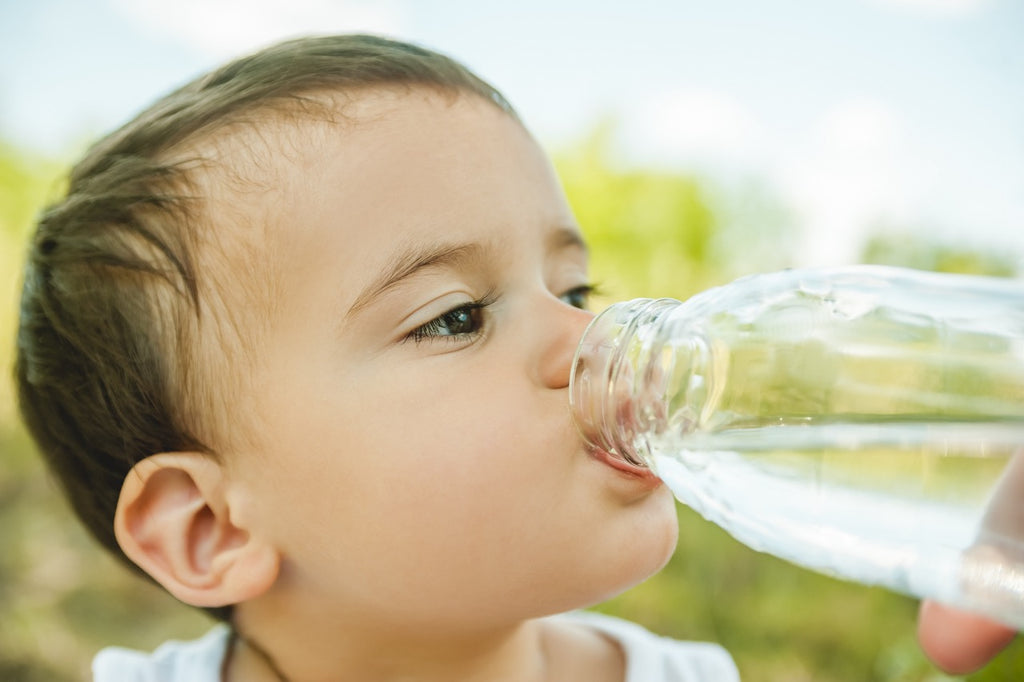
Always get your child checked by a medical professional if you’re worried about a fever.
Remember that hydration is very important, give your toddler plenty of water or milk if they will take it. Fever can dehydrate a child so keep them sipping on water as much as you can. If your child won’t drink at all then seek medical advice as they can quickly become dehydrated.
When to stop feeding a toddler at night
If you’ve been bottle feeding your baby then you may be able to phase out night feeds from 6 months because they will be getting enough calories and nutrition from their day time milk and weaning foods.
If your baby is breast fed then 12 months is the usual marker for beginning to phase out night feeds. If you stop before then, your milk supply might reduce more than you want it to. From 12 months you could try either stopping the night feed or cutting down the time you spend feeding your baby.
Your baby might just be looking for comfort at night rather than food, so you could try replacing the feed with lots of cuddles!
There’s no rush to stop breastfeeding at night and it shouldn’t be a pressure. Your baby should be getting enough nutrition during the daytime after 12 months though, so night feeds will be more for comfort than food after this time.
Which foods should you avoid when feeding a toddler?
Sugars - limit sugary foods to mealtimes and try to minimise them if possible.
Nuts - children under 5 shouldn’t be given whole or chopped nuts as they can choke.
Low calorie foods - unnecessary for kids under 5 as they find it hard to eat quantities and need all the nutrients possible for their growth. Children of this age shouldn’t need low calorie foods.

Shark, swordfish and marlin are all too high in mercury for kids under 5.
Certain types of eggs - be careful that the eggs you buy have the red lion mark to show they meet British standards. Do not give young children raw eggs. Duck eggs or quail’s eggs for example may not have a British standard mark.
Feeding a toddler on holiday
Going on holiday with a toddler can be stressful and you might be worried about what they will eat. We’ve got a few ideas that might help your holiday go a bit more smoothly and allow you to leave that stress behind when you go!
- Try to pack some snacks from home - especially for travelling. They will be familiar to your toddler and you won’t have to worry about searching for snacks en route or when you first arrive.
- Try to stick to a familiar eating schedule with your toddler. This can be tricky if you have a time change, but once you’ve reset your body clock, start up the usual eating timetable and your toddler will feel comfort in the routine. Things change on holiday but it’s good to keep some things in a familiar pattern - you might just avoid some of those meltdowns!
- Do encourage your toddler to try new foods - as long as you are eating them yourself your toddler may want to try! It’s good for your toddler to experience new tastes.
- Try to book somewhere with a kitchen or at least a fridge so you can go shopping for foods they might like and keep a stock of them in your room or apartment. That way there will always be something to fall back on!
- Don’t get stressed about what or how much your toddler is eating! They will quickly pick up on your stress and feel unhappy - which is more likely to stop them from eating! If you’re relaxed and happy then the chances are that your toddler will be too!
- Enjoy your holiday! Holidays are for relaxing and trying new experiences - not for stress and tension!
Feeding a toddler on the go
You don’t always want to be at home for toddler mealtimes and it’s not usually practical to eat every meal at home. Activities, days out and even shopping trips can mean that you’re feeding your toddler on the go!
If you know you’re going to be out and about at a meal or snack time then it’s best to plan ahead and pack snacks and either earmark somewhere to eat out or pack a nutritious meal.

A good packed meal should include all of the same elements you would have in a nutritious meal at home. This means a portion or two or starchy foods, a portion of protein, a portion of vegetables or salad, a portion of fruit and a portion of dairy food or equivalent.
For example, you could pack a hummus or egg sandwich cut into small pieces, some carrot and cucumber sticks; some mixed berries and a portion of natural yogurt or soya yogurt.
Alternatively you could pack a pasta salad with tomato sauce and grated cheese/vegan cheese; cucumber and tomato pieces; apple slices - squirt with lemon juice to prevent browning; a drink of milk/soya or other milk.
If you’re eating in a restaurant, try to order smaller portions from the adult menu rather than meals from a special kids’ menu unless the food is high quality. This will encourage experimentation and broaden tastes as well as being a fun way to be like the grown ups!
Toddler feeding therapy
If your toddler is having real problems with eating or learning to eat you might benefit from feeding therapy. This is something to discuss with your doctor or health visitor, but basically feeding therapy could help your toddler with problems like chewing properly and swallowing, improving the toddler’s feeding coordination, improving their sitting position and helping to minimise mealtime meltdowns.

It could also help you with food choices for your toddler, recommending improvements to their diet, help with choosing feeding utensils, choosing products to help with feeding and swallowing, help to improve your toddler’s eating environment and feeding schedule - among other things.
If you think that toddler feeding therapy might help you and your little one, the best thing to do is to ask a health professional.
Toddler feeding utensils
Your toddler will need the right eating equipment to enjoy their meals and snacks!
You’ll need plates, bowls, snack containers, water bottles, cups and cutlery! And bibs of course!
At around the age of 8 months many babies will start using a spoon to feed themselves, and toddlers can try using a fork at around a year old. Knives come later - most kids won’t use a knife properly like adults do for many years, at around the age of 7. In fact nowadays we don’t use knives to cut food as much as we used to so this means that kids often don’t master using a knife until they are older than 7!
Kids of 3-5 years old can try things like spreading butter or hummus with a knife. Remember that hummus often contains sesame seed paste so it’s not suitable for kids with nut allergies.
We offer a silicone spoon and fork set for very young toddlers - it’s tactile, easy to grip and won’t slip around on the plate or bowl. Silicone is BPA free and easy to wash by hand or in the machine, and we’ll personalised the cutlery for your child.

You’ll need plates for your toddler’s food - like our silicone, suction based dinosaur plate which is divided in to sections for different types of food. Personalised of course! Microwave, dishwasher and freezer proof too!
Bowls - for fruit, cereals, desserts. Again, silicone is a fantastic material to choose for your toddler’s bowl - we’ve got a panda themed bowl to make eating a bit more fun! Little ones will love our panda bowl with matching panda spoon specially designed so that small hands won’t slip down the handle. Again this bowl and spoon set comes personalised with the name of your choice. Our bowls are microwave and freezer safe!

Drinking cups - once your toddler has mastered drinking from a sip cup, they can move on to open cups. This can be quite a difficult skill to master - the potential for spills is huge! We have silicone open cups that feel comfortable in a toddler’s hands, are tactile and pliable with an organic feel. We’ll personalised the cups with lettering of your choice - they make great gifts if you’re looking for a present for a toddler!

Snack containers - you’ll be needing lots of these for trips out and even for just in the house. We’ve got a personalised silicone snack pot with a lid that allows little fingers to dip in and grab a snack without spilling the contents! It also doubles as an open cup once you remove the lid. Our snack pots are also microwave and freezer proof!

Bibs - we offer BPA free silicone bibs, with snap fastenings at the neck and a wide lip to catch escaping food. Fully personalised of course! These are idea accessories for toddler feeding! There’s nothing like a good bib to help keep mess to a minimum, and our bibs can be wiped clean, washed by hand or in the machine.

For your kids’ water bottles we have the perfect way to label - Personalised Bottle Bands! These are silicone bands that fit snugly to your toddler’s water bottle and they are laser marked with their name and an icon of choice. Super stylish and practical, they’re easy to wash on the bottle by hand or in the machine.

Other commonly asked toddler feeding questions
Can toddlers eat cake?
Yes of course toddlers can eat cake - but remember that cake should be an occasional treat and taken in toddler size portions rather than a staple! It is high in fat and sugar and should be limited in anyone’s diet. But it’s fun for toddlers to eat cake if it’s a special occasion and you definitely should encourage them to join in and be part of any celebrations!
Beware of cakes that may contain nuts if your child has a nut allergy - and also remember that whole or chopped nuts can cause choking in young children.
Can toddlers drink squash?
Squash contains sugar so shouldn’t be given to toddlers and young children. Fizzy drinks accelerate tooth decay, and sugar free contains sweeteners so it’s not suitable for the under 3s.
Are toddlers allowed honey?
As mentioned, honey isn’t suitable for the under 5s because it can contain small amounts of bacteria.
Can toddlers eat Weetabix?
Yes! Weetabix is a great, low sugar breakfast choice. Try with 100ml whole milk and sliced banana!
Can toddlers eat pate?
The NHS recommend that although pate can be given from 6 months old, because it’s made from liver you shouldn’t feed it more than once a week. Lots of parents avoid giving it to babies and toddlers altogether.
Should I feed my toddler just wholegrain varieties of foods?
Your toddler may find it hard to absorb enough calories and nutrients if you only feed wholegrain varieties of starches. It’s best to mix things up for the under 5s so that their little tummies can manage the variety of foods that they need. Feed some whole grain and some white starches, or whatever they prefer. Let them try both and see which they prefer! You might be surprised!
Top tips for feeding toddlers
- Feed a variety of foods from the recommended food groups
- Have the correct utensils at the ready
- Keep the eating environment calm and relaxed
- Don’t over criticise or over praise
- Feed toddlers adult food in smaller portions rather than toddler meals
- Feed well spaced meals interspersed with snacks
- Let toddlers experiment with new tastes and textures
- Model eating healthy food yourself
We hope you’ve found our toddler feeding blog interesting and informative! Please remember to check with a medical professional if you’re unsure about anything as they can help you with tailored advice.
Remember, toddler feeding should be fun and a voyage of discovery not a time of stress! Give your toddler a brilliant start by introducing them to a wide range of healthy, nutritious foods early on in their life and they’ll be well prepared for a lifetime of healthy eating! Enjoy eating with your little ones and feel the fun of including them in family mealtimes!
Useful resources
This is a brilliant resource with advice on feeding kids, packed lunches, portion sizes for most foods, different sorts of milk and much more.
This resource gives an excellent summary of proper toddler nutrition.
This resource gives advice on toddler hydration.
This is a great video on toddler feeding.
This is a great resource about utensils for self feeding.
This is a good resource for toddler feeding and meal ideas including packed lunches with examples for you to try.
This is fantastic information for parents of vegetarian and vegan toddlers.
Bibliography
*Source for portion sizes
https://www.firststepsnutrition.org
https://www.nutrition.org.uk/life-stages/toddlers-and-pre-school/learning-to-love-vegetables/
https://www.nhs.uk/conditions/baby/weaning-and-feeding/what-to-feed-young-children/
https://www.childrensnutrition.co.uk/full-blog/self-feed
https://ezpzfun.com/blogs/feeding-challenges/what-is-feeding-therapy/
https://www.wsh.nhs.uk/CMS-Documents/Patient-leaflets/PaediatricDepartment/6293-1-Dietary-management-of-toddler-diarrhoea.pdf
https://www.whattoexpect.com/toddler/health-and-safety/sick-toddler
https://raisingchildren.net.au/babies/sleep/settling-routines/night-weaning






